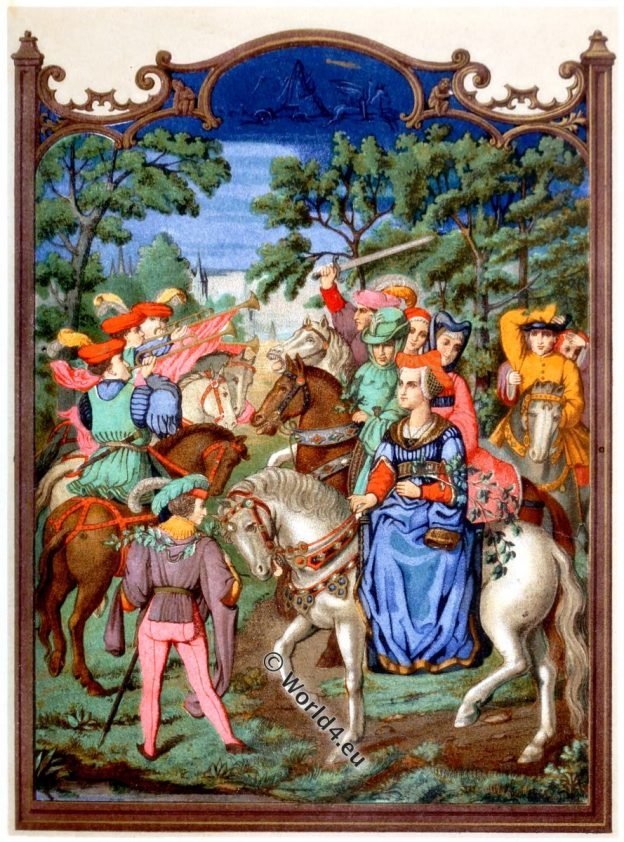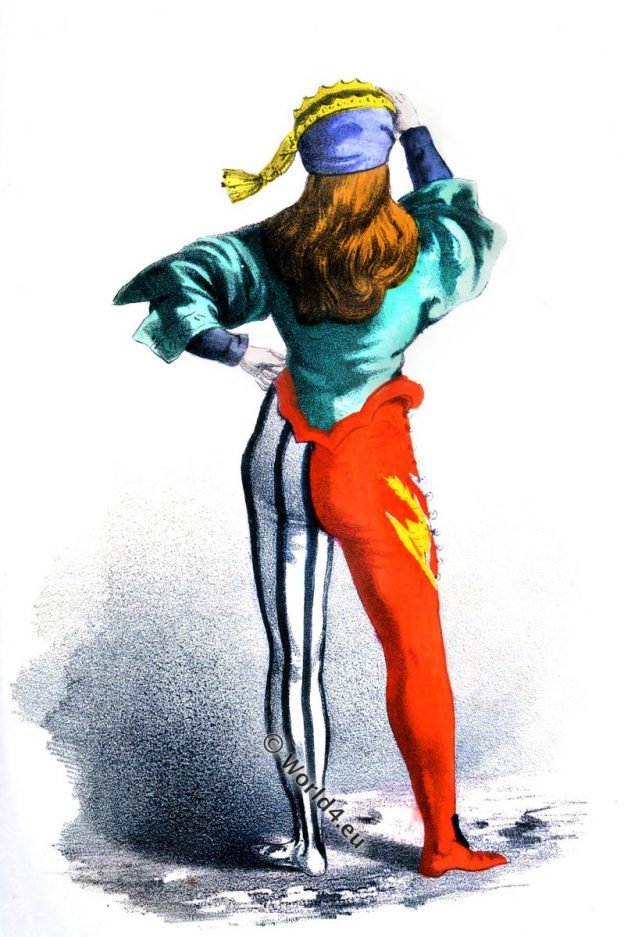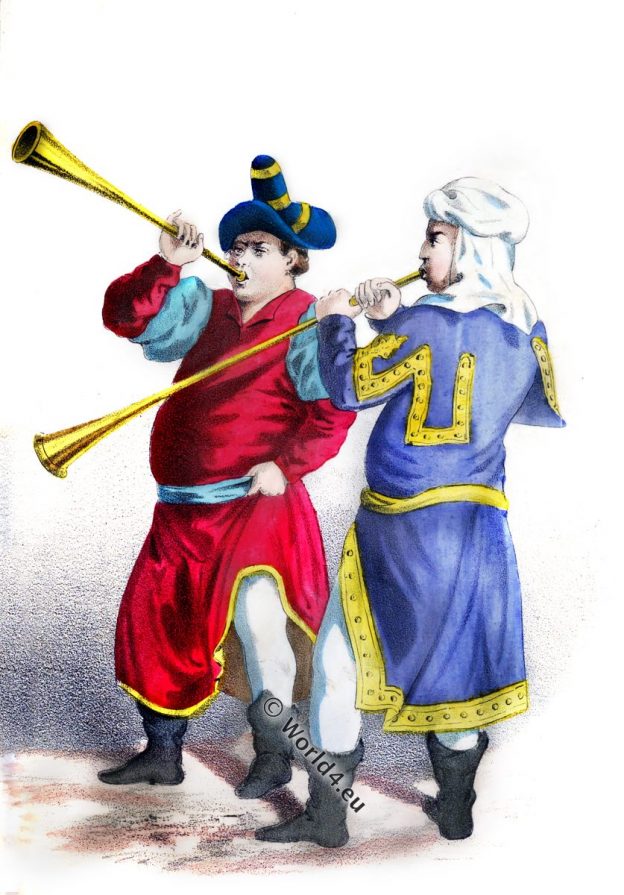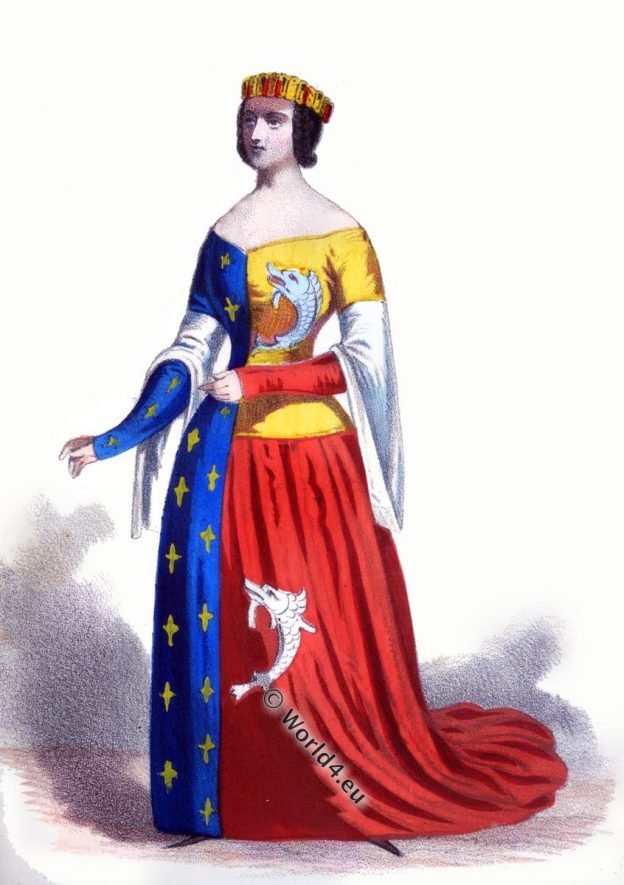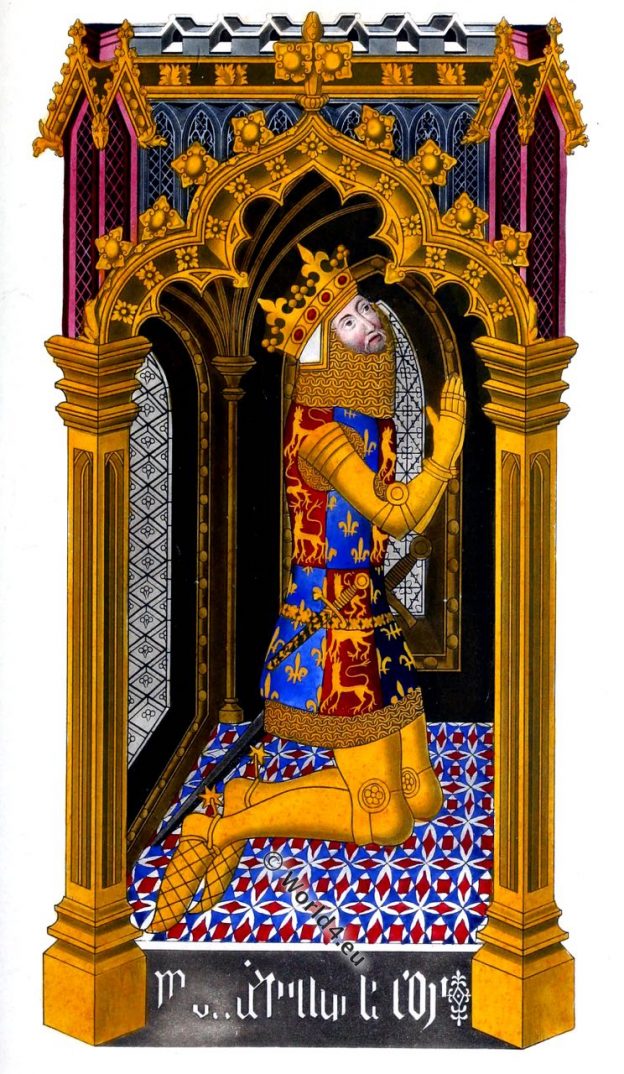English kings Henry I and King John. IN one of the Cottonian manuscripts (Julius, E. IV.), a brief metrical chronicle of the kings of England, which has been attributed to… Read More
Tag: Medieval costume
Medieval costume history. The period between the end of antiquity and the beginning of modern times about the 6th to the 15th century. It includes as superordinate, the Byzantine, Merovingian, Carolingian and Burgundian costume eras. Therein are the Gallic, Celtic, English-Saxon, Normans, Gothic, Romanesque included.
The court society of the castle gathers for a ride.
Miniature of the Breviary of Cardinal Grimani, attributed to Marciana Biblioteca of S.Marc, Venice. Fifteenth century.
Proclamation of a tournament in the ages of chivalry.
PROCLAMATION OF A TOURNAMENT.
The Society of La Calza. Association of young Venetian noblemen, 14th c.
The Society of La Calza was an association of young Venetian noblemen and a few strangers of high rank.
Musicians of the time of Edward III. England 14th century.
The plate which we give represents a group of simple musicians of the time of Edward III, and the singularity of their costume proves that a taste for the grotesque in dress had already made sensible progress at this period.
Anne Dauphine of Auvergne in armorial robe.
Anna Dauphine d’Auvergne (1358 – 1417) Countess of Forez, Comtesse de Montpensier
EDWARD III, King of England and Wales. Anjou Plantagenet dynasty.
Edward III. from the Anjou Plantagenet dynasty, is considered one of the most important English rulers of the Medieval times.
French lady of rank. 15th century nobility costume.
A noble French lady, is decked the sugar-loaf (hennin) head-dress so commonly adopted during all of the 15th century.
Courtiers of the time of Richard II.
Anjou-Plantagenêt ruling dynasty of medieval England
Geoffrey Chaucer. English writer and poet.
DAN Chaucer, as he is termed by some of our older writers, is the popular representative of the earlier period of English poetry; indeed he may be considered The Poet, par excellence, of the English Middle Ages.


